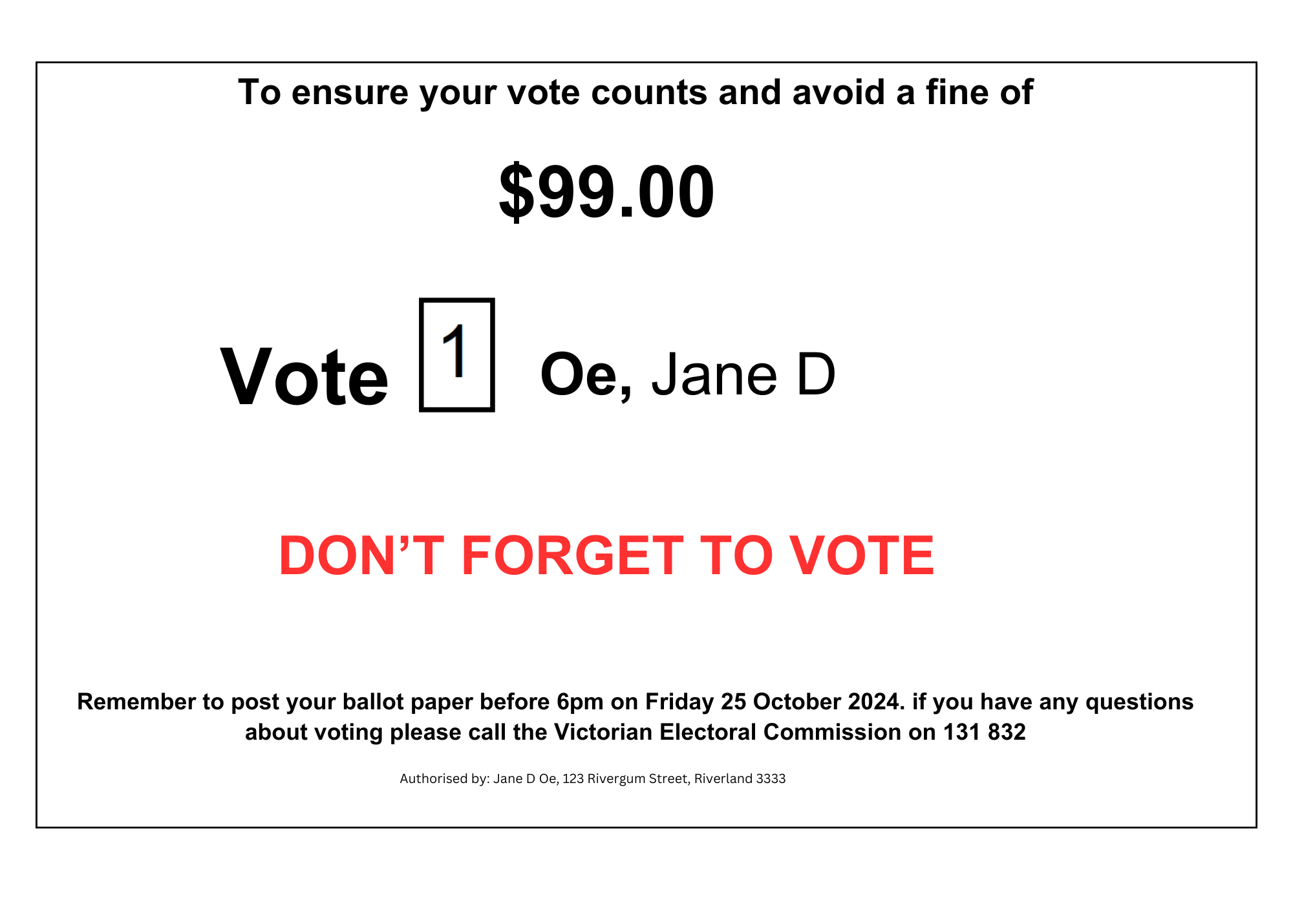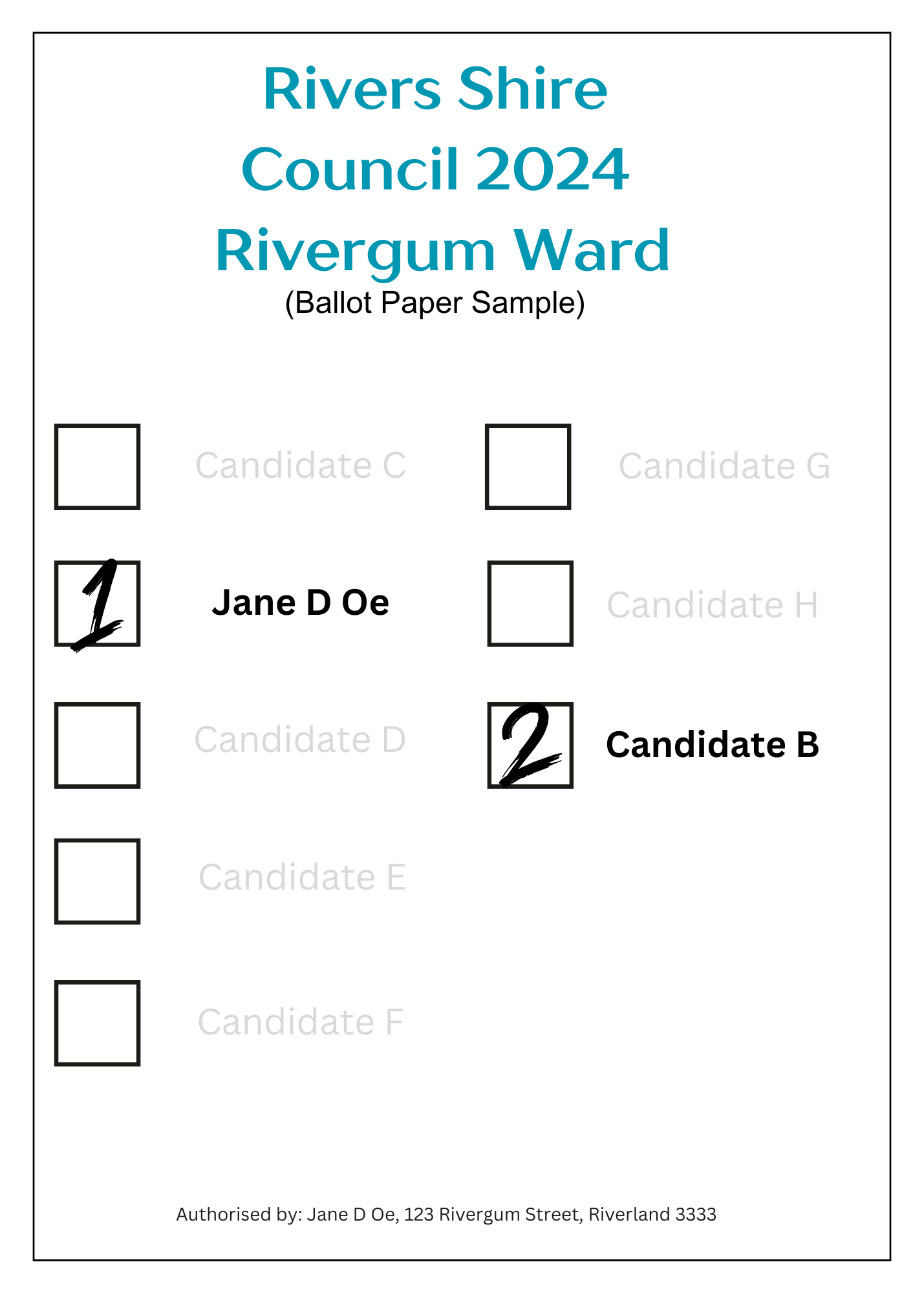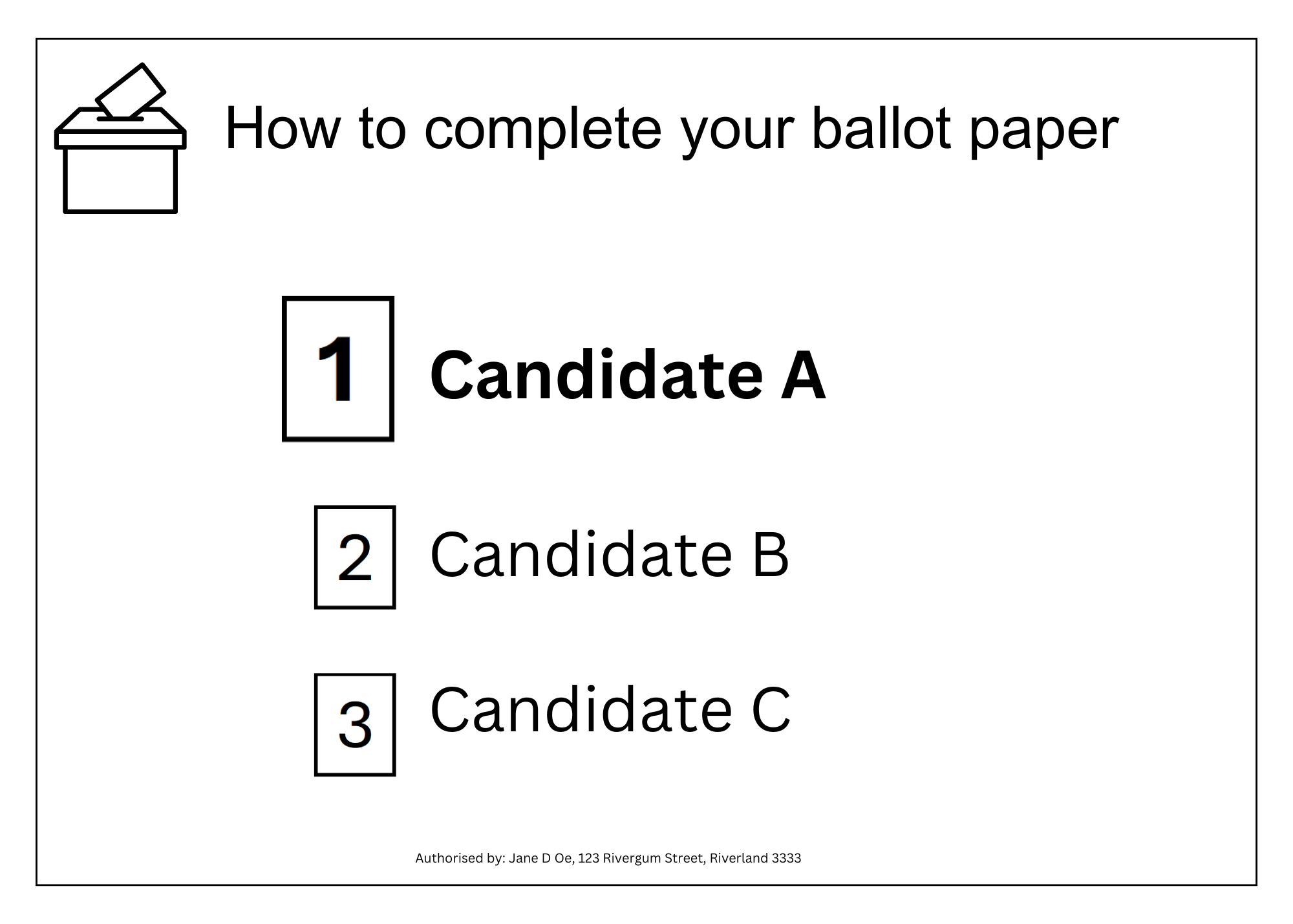The terms misleading and deceptive in this context have been narrowly defined by the courts. They refer to the effect and understanding of a voter’s vote rather than influencing how the voter decides who to vote for (see Evans v Crichton-Browne (1981) 147 CLR 169). You can find further examples of case law on the Inspectorate’s website here.
Section 288 of the Local Government Act (2020) (the Act) governs when material is misleading and deceptive:
- Section 288(1) prohibits a person printing, publishing or distributing material that is likely to mislead or deceive a voter in relation to the casting of their vote
- Section 288(2) prohibits a person printing, publishing or distributing misleading and deceptive material containing a representation or purported representation of a ballot paper that is likely to induce a voter to mark their vote other than in accordance with the directions on the ballot paper
The Local Government Inspectorate enforces the prohibition against printing, publishing or distributing misleading and deceptive material to ensure members of the public cast formal votes with candidates listed in the order of their preference, and do not cast informal votes which are not able to be counted.
This requirement always applies, not just during an election period. It applies to all people, not just candidates and registered political parties.
Defamatory material
Defamation means causing serious harm to a person’s reputation by publishing material about them that changes the way people feel about them.
While there have been claims in previous local government elections that defamatory material has been printed, published or distributed (see for example Mulholland & Anor v Langdon [2022] VCC 1848), as defamation is a private, civil matter it is not within the jurisdiction of the Local Government Inspectorate.
A person who believes they have been defamed can seek independent legal advice regarding the options available to them.
Examples of misleading and deceptive material
Provided below are three (3) examples of electoral material that would be considered misleading and deceptive by the Local Government Inspectorate.
EXAMPLE 1

A candidate distributes electoral material which reads “to ensure your vote counts and avoid a fine, vote [1] Oe, Jane D.
This is likely to be misleading or deceptive under section 288(1) of the Act. It is likely that the material may lead a voter to believe that:
- they must vote for the candidate to cast a valid vote; and/or
- they must vote for the candidate to avoid a fine
EXAMPLE 2

A candidate distributes electoral material which contains a purported representation of a ballot paper with how-to-vote instructions. There are eight candidates in the election. The candidate attempts to number all candidates consecutively, in order of preference, but places the number 5 against two candidates and does not place the number 6 against any candidates.
This is likely to be misleading or deceptive under section 288(2) of the Act. The Act requires full preferential voting – a voter is to mark their first preference as ‘1’ on the ballot paper and then number candidates consecutively, in order of preferences. Incorrect ballot papers are informal and unable to be counted.
EXAMPLE 3

A candidate distributes material which contains a purported representation of a ballot paper with how-to-vote instructions. The candidate numbers two candidates consecutively, in order of preference. There are eight candidates in the election. The other six candidates are listed in the order they appear on the ballot paper but are not numbered in order of preference.
This is likely to be misleading or deceptive under section 288(2) of the Act. The Act requires full preferential voting – a voter is to mark their first preference as ‘1’ on the ballot paper and then number candidates consecutively, in order of preference. Incomplete ballot papers are informal and unable to be counted.
Examples of material that is not considered misleading or deceptive
Provided on the following pages are two (2) examples of electoral material that would not be considered misleading and deceptive by the Local Government Inspectorate.
EXAMPLE 1
A candidate distributes electoral material which reads “In the current Councillor term Councillor Jane D Oe voted to close all kindergartens in the Council area.”
This is not likely to be misleading or deceptive under the Act. While the material may affect the formation of a political judgment by a voter, it is not likely to mislead or deceive a voter in relation to how they mark their ballot paper.
EXAMPLE 2

A candidate distributes material which numbers three candidates consecutively, in order of preference. There are eight candidates in the election. The other five candidates are not listed. The three named candidates are not listed in the order they appear on the ballot paper.
This is not likely to be misleading or deceptive under the Act. The material:
- is not a representation or purported representation of a ballot paper; and
- illustrates the candidate’s preferences, which candidates are entitled to do.
Updated

